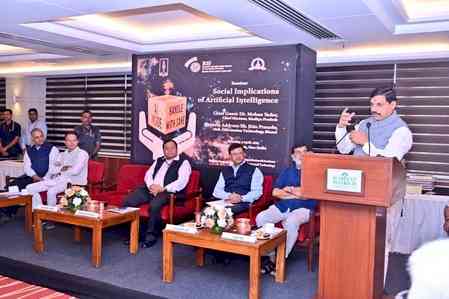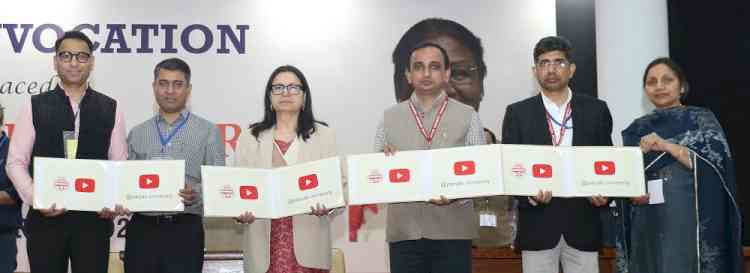Nanomedicine for liver cancer developed by Amrita researchers gets US, Australia patent
The medicine, that gets triggered by external radio waves, can be used not only for medical imaging of tumors but also for targeted drug delivery

Hyderabad, September 13, 2022: Researchers from School of Nanosciences & Molecular Medicine at Amrita Vishwa Vidyapeetham have won a patent in the US and Australia for a novel nanomedicine that holds great promise for early detection and treatment of liver cirrhosis and liver tumor. The invention is the outcome of a research project funded by the Nanobiotechnology Taskforce of Dept. of Biotechnology, Govt. of India.
Dr. Shantikumar V Nair and Professor Dr Manzoor Koyakutty from Amrita School of Nanosciences & Molecular Medicine in Kochi led a team of four researchers – Dr. Anusha Ashokan, Dr Ida M Anna, Dr Vijay Harish, Dr. Badrinath Sridharan – to create a special type of nanomedicine that responds to radio wave signals sent from outside the body. Once the nanoparticles are injected into a tumor, they can be heated up using external, medically approved radio waves. Doctors can visualize the tumor using an MRI machine and burn it off in a controlled manner.
Amrita researchers have demonstrated that the novel technology can be used for early detection of liver cirrhosis and liver tumor, early-stage image-guided treatment of liver tumor using radio-frequency ablation therapy as well as labelling and tracking the movement of stem cells inside the body after stem-cell transplantation to assess how effective the therapy has been.
Said Dr. Manzoor Koyakutty, Professor, Amrita Centre for Nanosciences & Molecular Medicine: “We have made a unique nanomedicine that can be used for medical imaging, combined with drug delivery. Its particles are made of synthetically prepared calcium phosphate, a biomineral present in our bones. Generally, chemically prepared inorganic nanoparticles cause safety issues when used as nanomedicines. However, as a biomineral, calcium phosphate is biocompatible and biodegradable, hence totally safe for human use.”
He added: “We have engineered the nanoparticles by a process called 'doping' where a few hundred calcium atoms are replaced with Iron atoms. This makes the material 'magnetic' and thus its movement inside our body can be visualized with a device such as the MRI. By utilizing this property, we have demonstrated the early-stage detection of liver cirrhosis and liver tumor. In another study, we showed the therapeutic application of this nanomedicine in treating liver tumor by thermally ablating (burning) cancer cells by activating the nanoparticles using radio-frequency waves.”
Talking about another application of the invention, Dr. Shantikumar V Nair, Dean of Amrita School of Nanosciences & Molecular Medicine said: “We labeled stem cells using these nanoparticles and demonstrated the possibility of tracking their movements in the brain using MRI, after stem-cell transplant therapy. At present, doctors cannot see the fate of stem cells after transplantation. But calcium phosphate nanoparticles can give magnetic contrast to the stem cells under MRI, such that we can visually estimate if the stem cells are migrating to the site of damage. This helps us understand if stem cell therapy has been effective or not for a patient.”
Dr. Shantikumar V Nair said that two critical features make the Amrita nano-medicine unique. “Firstly, it makes the nanomedicine imageable inside our body using medical-imaging modalities such as MRI. Secondly, we can activate these nanoparticles externally using radio-frequency waves. This enables us to see the precise location of the nanomedicine particles inside the body and externally activate them when they are exactly at the site of a disease like cancer. These features are not available in any other nanomedicine available today.”
He added: “We are currently investigating cancer-immunotherapy application potential of these nanoparticles with support of Biotechnology Industry Research Assistance Council (BIRAC) and an Indo-Swiss collaboration with Ludwig Cancer Research Institute, University of Lausanne, and University of Geneva, Switzerland. With support from the Dept. of Biotechnology, Govt. of India, we are now testing regulatory safety studies in large animal models. We expect to conduct human trials of the nanomedicine within the next one year.”


 City Air News
City Air News 








